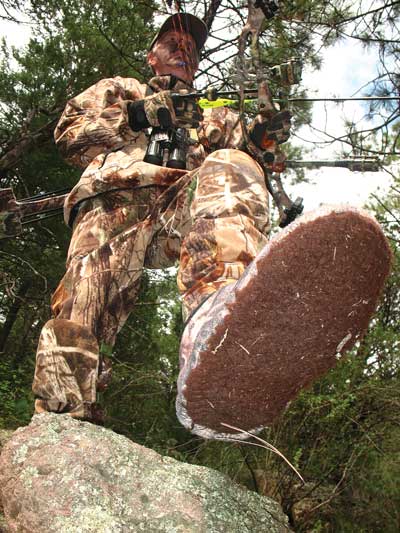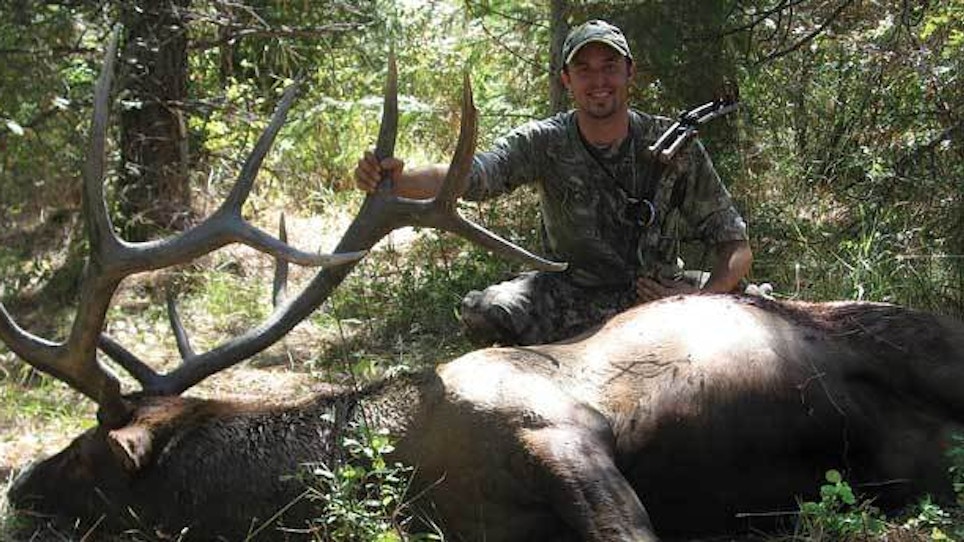 Key #1: Get Aggressive
Key #1: Get Aggressive
Unless you have a great site over a waterhole in a dry corner of elkdom, patience isn't always a virtue. Consider a more aggressive tactic: dog them.
The art of dogging elk is about moving quickly and quietly, continually using binoculars to learn when to advance or stay put. Elk are big and often run in herds, so spotting them isn't difficult. Maintain contact with the herd. Don't fall into the cautious stalking deer hunter mode. Because elk walk faster than you jog, they will quickly outdistance you.
Know the lay of the land. Don't advance until the herd moves toward topography that blocks you from detection and lets you close the gap for that killer shot.
Key #2: Quiet Those Feet
Footwear can make or break a bowhunt. Classic mountain boots are too heavy to allow uncompromised agility or quiet movement. My solution is a lighter-weight boot that offers sure ankle support in rough-and-tumble terrain, but I get an experienced cobbler to replace the hard Vibram soles with something soft and spongy.
These soles wear quickly, but they keep my steps as silent as possible. One elk guide I knew glued felt water-boot soles to his boots. Other bowhunters forego heavy boots, opting for light tennie-hikers or cross-trainers with thin soles. Another option is to tote soft-bottomed leather moccasins lashed to the outside of your daypack, then swap them onto your feet once you make contact with the herd.
The modern option is over-the-boot stalking "slippers." They slip right over any boots and effectively quiet steps.
Key #3: Play The Wind
At its most basic, wind falls or settles downhill when it is cold, rises or runs uphill when it's warm. This makes early-morning or late-evening winds most reliable as cool morning air moves down and warm mid-day winds move up. The problem is during the transition between temperatures when winds turn on you just as your begin your stalk.
It's more complicated when you must cross from warm ridge tops to cool canyons. At the seams of these two distinctive zones are swirls that circle back on themselves.
The successful elk hunter becomes a student of prevailing winds, basic timetables, and how various terrain features affect air currents. Basically be aware of such fluctuations. Hang back when you're not certain, aggressively forge ahead when conditions are stable.
If the terrain means you must make an aggressive move to set up on a shot of a lifetime, don't get caught up in a full-frontal wind angle. If you get in and get your shot without detection, that wind is good enough.






